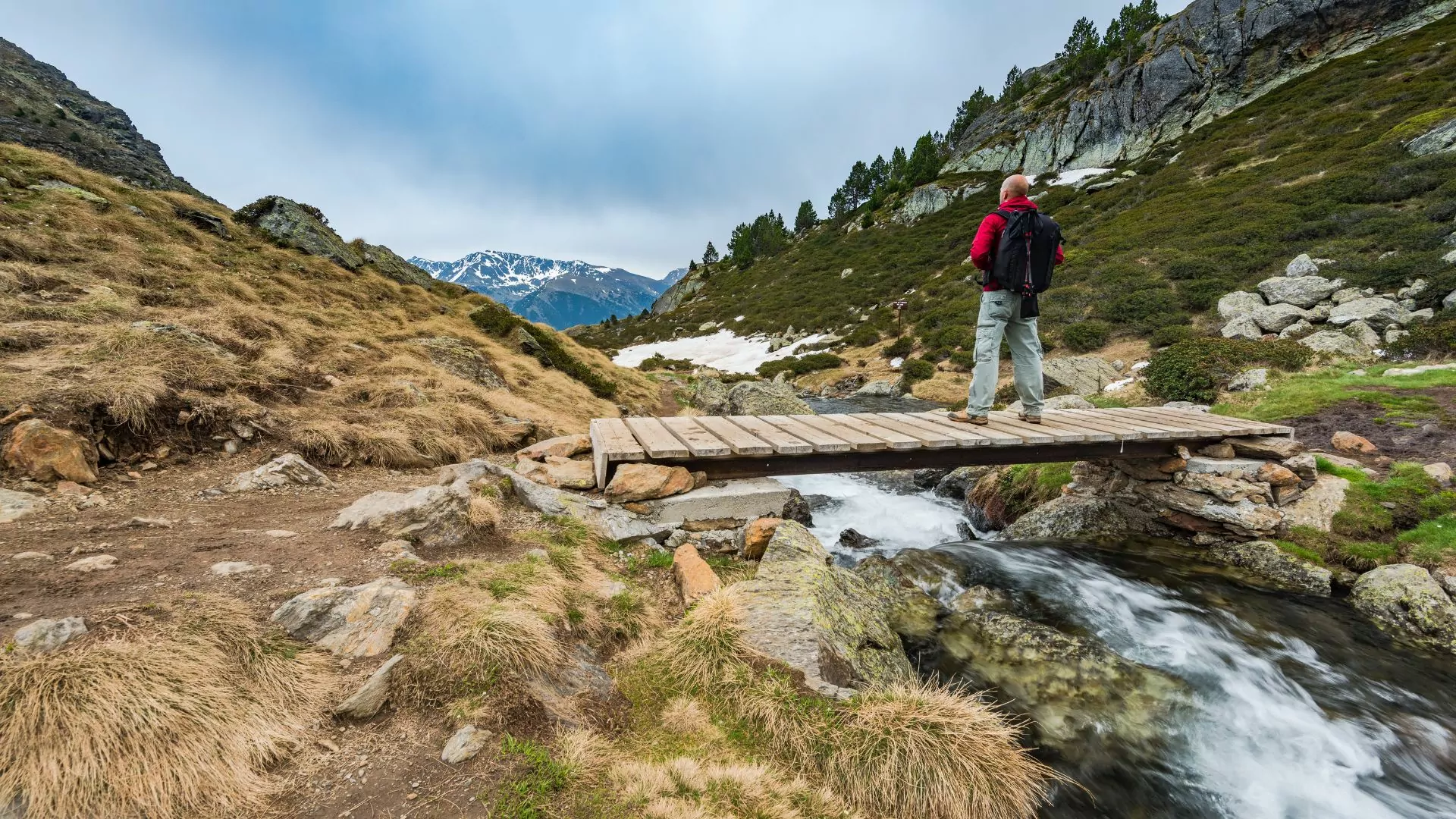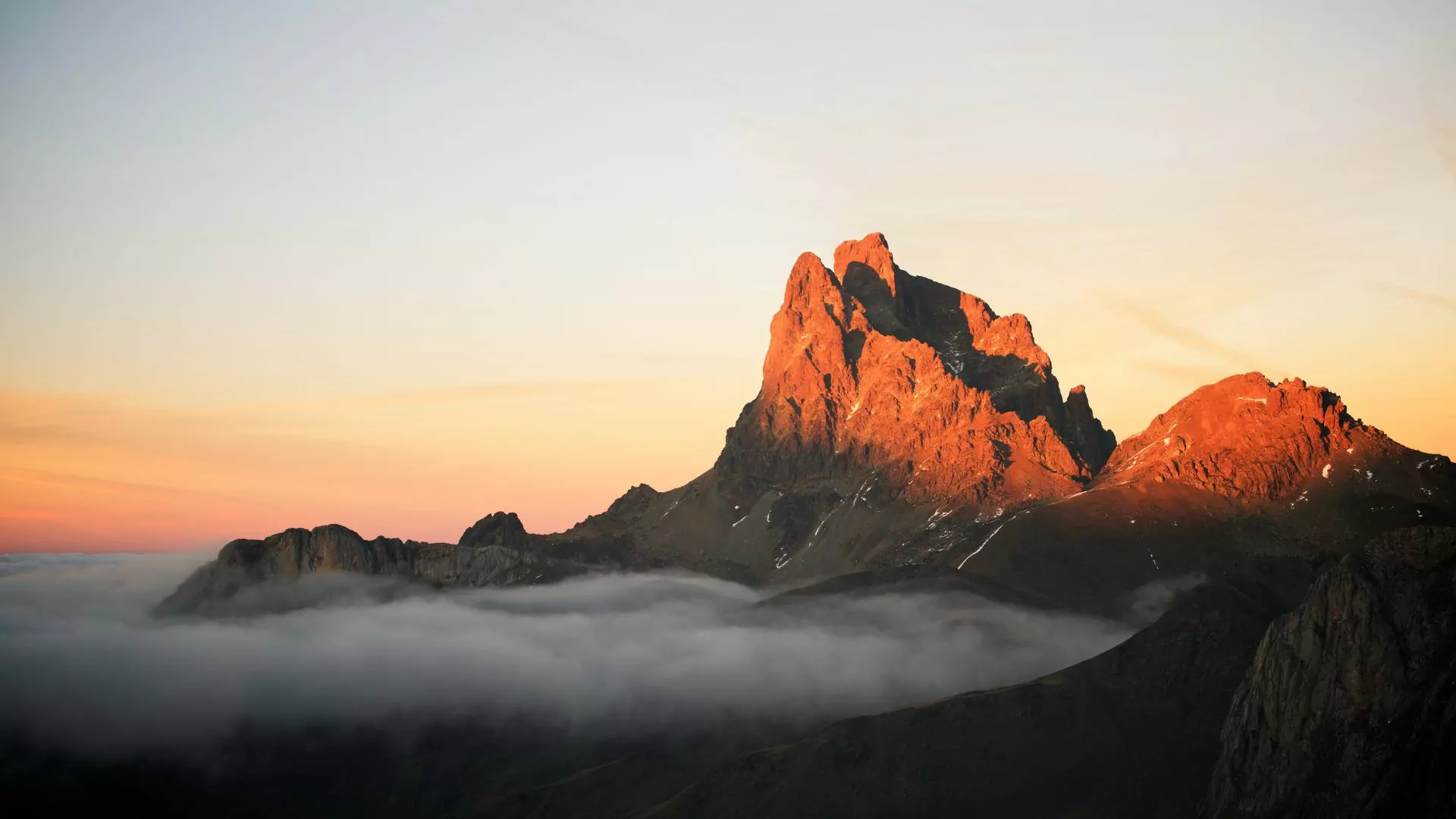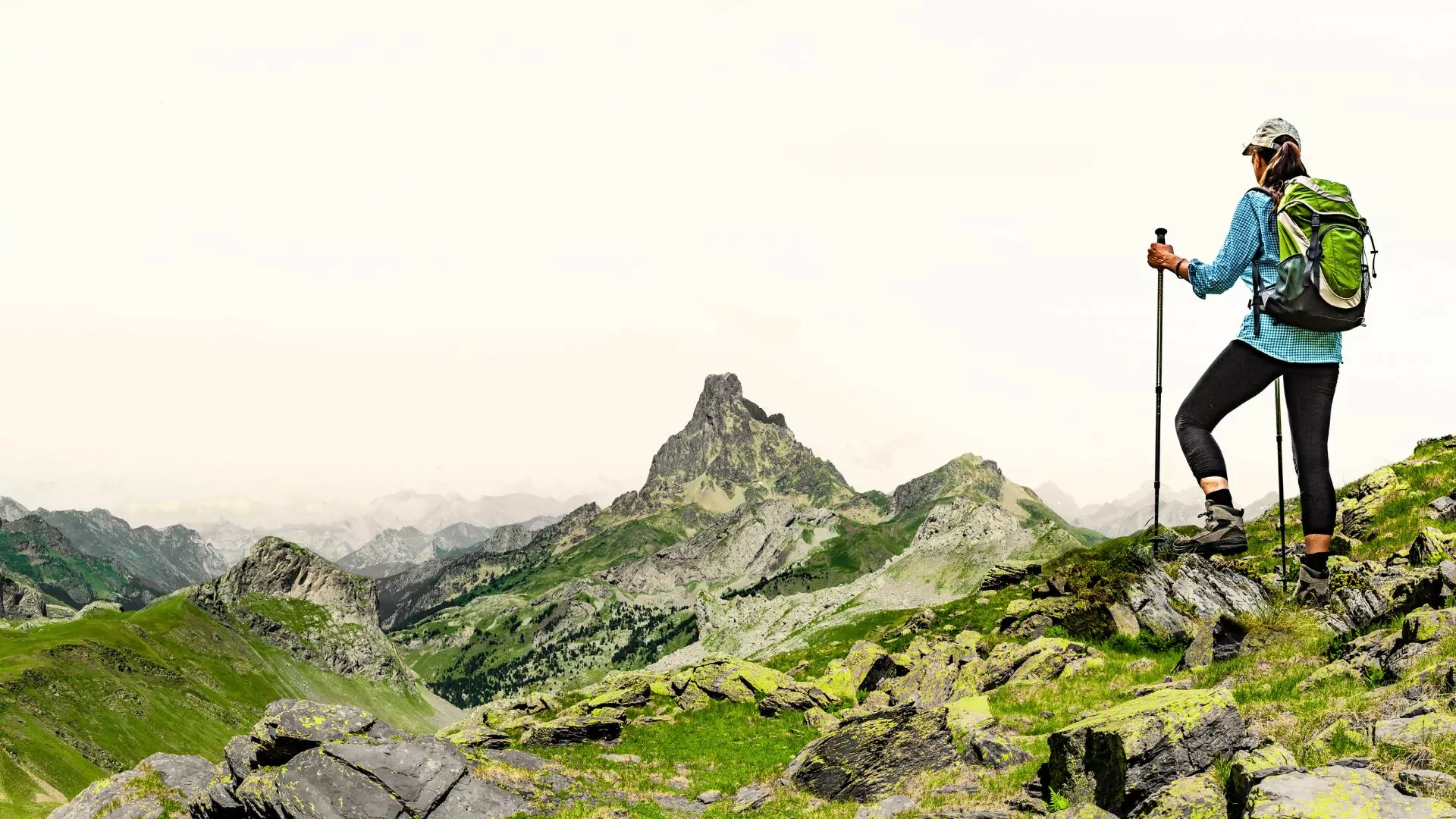Hiking in the Pyrenees Mountains

The Pyrenees Mountains are a captivating blend of rugged peaks, lush valleys, and diverse wildlife, offering an outdoor paradise for adventurers. Stretching between France and Spain, the Pyrenees boast a variety of hiking trails, from high-altitude challenges to moderate valley walks, all surrounded by stunning natural beauty. Whether you’re an experienced mountaineer or a casual nature lover, Pyrenees hiking promises unforgettable experiences in a landscape rich in history, culture and scenery
Where are the Pyrenees?
The Pyrenees act as a natural border between France and Spain. They stretch 310 miles from the Mediterranean Sea in the east to the Bay of Biscay on the Atlantic Coast in the west, and are divided into the following three, distinct sections:
- The Western Pyrenees: known for their rolling hills and gentler terrain.
- The Central Pyrenees: home to the highest and most dramatic peaks, including Aneto, the tallest peak at 11,168 feet.
- The Eastern Pyrenees: here the mountains slowly descend towards the Mediterranean coastline and feature unique limestone rock formations with picturesque coastal views.
Geologically, the Pyrenees are a product of tectonic collisions that began over 100 million years ago, giving rise to the steep ridges and deep valleys that make this area a hiker’s dream.
Why hike the Pyrenees?
 Hiking in this infamous range offers something for everyone. The diversity of the landscape is remarkable, from astounding peaks and calm glacial valleys, to rolling hills and serene meadows. Here are a few reasons we think Pyrenees hiking should be on your bucket list:
Hiking in this infamous range offers something for everyone. The diversity of the landscape is remarkable, from astounding peaks and calm glacial valleys, to rolling hills and serene meadows. Here are a few reasons we think Pyrenees hiking should be on your bucket list:
Stunning Natural Beauty
Without a doubt this region offers some of Europe’s most dramatic natural landscapes. The Central Pyrenees house the Cirque de Gavarnie, a UNESCO World Heritage Site featuring glacial carved rock formations, mammoth cliffs, and surging waterfalls. High-altitude lakes like Lac de Gaube and Ibon de Anayet reflect the surrounding peaks in their pristine waters. The flowing hills of the Western Pyrenees provide a rural feel, with grazing sheep and cattle dotting the landscape.
Diverse Trails
From the infamous GR10 and GR11 to shorter, scenic hikes, Pyrenees hiking provides vast variety. For the eager explorer, the Haute Route Pyrenees (HRP) sticks close to the mountain ridges, offering extremely challenging and technical high altitude terrain. Should one seek day hikes, the Cirque de Gavarnie loop, and the Pic du Midi d’Ossau hike offer incredible views without the multi day commitment. There are countless opportunities for hiking, from a single day, to more than a month spent on the trail.
Rich Culture and History
The Pyrenees aren’t just a natural wonderland, but also a region rich in history and culture. Hikers pass through charming French villages, ancient monasteries, and areas rich in Basque traditions. The landscape is filled with centuries-old stone buildings and historic pilgrimage routes, uniting natural beauty with human history. For those keen on exploring this union more fully, don’t miss the Grottes Bellevue et vue Panoramique or the Ane Cave.
Popular Hiking Routes in the Pyrenees
With 310 miles of mountainous terrain to explore, choosing the best hike depends on many things. We’ve put together some of the most popular routes in the area:
The GR10, The French Pyrenees
Distance: 540 miles | Time:45-60 days
Highlights: The GR10 is an iconic long distance trail traversing the entire French side of the pyrenees, from Hendaye in the west to Banyulssur-Mer on the Mediterranean. Along the way hikers experience a mix of incredible mountain passes, quaint French villages and local customs, and heaps of peaceful solitude in nature.
The GR11, The Spanish Pyrenees
Distance: 540 miles | Time: 40-50 days
Highlights: The Spanish counterpart to the GR10 takes hikers across the rugged Spanish Pyrenees, passing through Ordesa National Park and the Val d’Aran. The GR11 offers a more remote and dramatic experience compared to the French version. For experienced hikers only.
Cirque de Gavarnie
Distance: 6.2 mile loop | Time: 4.5 hours
Highlights: A short yet spectacular hike through one of the Pyrenees most famous natural formations, the glacier carved Cirque de Gavarnie. These towering cliffs and waterfalls make this a must-see for visitors to the region.
Ordesa Valley and Monte Perdido
Distance: 12.5 mile loop | Time: full day
Highlights: Situated in Ordesa y Monte Perdido National Park in Spain, serving as Spain’s first protected natural area, takes visitors through a breathtaking valley surrounded by soaring limestone cliffs. Monte Perdido is the third highest peak in the Pyrenees, and is in constant view here. Known as an uncontested gem of the Pyrenees.
Lac de Gaube and Pont d’Espagne
Distance: 9.3 mile loop | Time: most of the day
Highlights: This popular scenic day hike brings visitors to the idyllic, mirror-like, cristaline alpine lake of Lac de Gaube near Cauterets, Hautes-Pyrenees in France. Another bucket list for many.
Pyrenees Hiking Preparation
Proper preparation is key to enjoying a Pyrenees hiking experience. Here are some crucial tips to prepare with:
Physical Preparation
Hiking in this region often involves significant elevation changes and varied terrain. To prepare, build endurance through long walks and hikes on various terrain. Strengthen your leg and core muscles to handle the uphill and downhill sections, and train with a weighted backpack to simulate the weight you’ll carry. Ensure you’ve completed at least 80% of the mileage you aim to cover on your trip beforehand to check your fitness.
What to Pack
Packing the right gear is essential for comfort and safety. We recommend the following items for a Pyrenees hiking adventure:
- Backpack – A comfortable, well-fitted, and adjustable pack with enough space for food, layers, and supplies.
- Footwear – Sturdy, waterproof hiking boots with good tread. Don’t forget to break them in before your trip!
- Clothing – Layers are key! moisture-wicking base layers, a warm fleece or down jacket, and a waterproof and windproof outer layer. Hiking shorts and pants will prove useful as well.
- Navigation tools – A map, GPS, compass or a smartphone.
- Hydration – A camelback, water bottles, and water purifier for multi-day hiking.
- Food – Lightweight, high-energy food for through hiking, plus cooking gear, and your favorite snacks.
- Emergency Kit – A first aid kit, multitool, flashlight, and fire starting kit.
- Sun protection – Sunscreen, sunglasses, sun hoody, and a hat are must-haves in the high altitude.
Weather Conditions
The Pyrenees weather conditions are unpredictable, so prepare for sudden changes from blazing sun to surprise storms. Always check the forecast before setting out, and pack accordingly. Some areas may require permits, so check local regulations in advance.
Planning your Pyrenees adventure
 Whether you’re chasing the thrill of bagging peaks, exploring lush countryside valleys, or immersing yourself in the rich history and culture of the region, Pyrenees hiking offers an unforgettable adventure. With diverse trails, stunning natural beauty, and memorable experiences, this region is a must-visit for outdoor enthusiasts. Join us on our guided trip exploring the grand Pyrenees via hiking!
Whether you’re chasing the thrill of bagging peaks, exploring lush countryside valleys, or immersing yourself in the rich history and culture of the region, Pyrenees hiking offers an unforgettable adventure. With diverse trails, stunning natural beauty, and memorable experiences, this region is a must-visit for outdoor enthusiasts. Join us on our guided trip exploring the grand Pyrenees via hiking!






